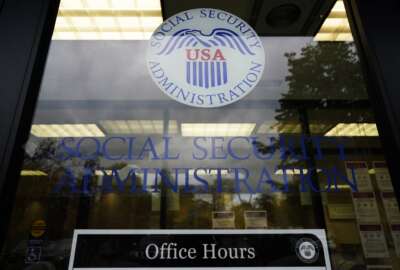Agencies to pilot Yelp-like button to gauge customer service
The new "federal feedback button" is the White House's latest attempt to boost agencies' interactions with Americans and enhance their level of customer service...
The Obama Administration will soon test a “federal feedback button” that it hopes will let agencies spot customer-service issues as soon as they happen.
The feedback button will be like Yelp for government, said Lisa Danzig, the associate director for performance and personnel management at the Office of Management and Budget.
The popular app, Yelp, lets users award one to five stars to restaurants, pubs and other retailers. They can also leave remarks or even photos of the food.
The federal version won’t be so sleek or sophisticated. It might not even be a mobile app in its first incarnation. It could be a more low-tech kiosk in an agency office or a website button. But it will retain Yelp’s five-star scale and section for users to give more detailed reviews, Danzig said.
“Mainly, we’re looking for a simple tool that provides a very high-level rating: Was it good or was it bad?” she said. “We also want deeper context: What made it good or bad?”

The tool is part of a greater initiative to restore Americans’ trust in government, which—as measured by customer-service ratings—needs a boost. A recent American Customer Service Index survey found Americans thought more highly of the service they received from cable TV providers than the federal government. The administration has made improving customer service one of its eight cross-agency priorities. Last week it launched a customer-service awards program for federal employees.
While the government relies on numerous surveys to gauge customer service, it lacks real-time, consistent, ongoing information, Danzig said.
The administration envisions agencies using the feedback button in two ways.
If front-line managers have access to the reviews, they can stop problems in their tracks, she said. The White House and agency leaders could use the same data to compare service across programs or offices.
The administration has not announced the agencies who will participate in a three-month pilot that will begin in May or June, but Danzig likes to refer to one agency in particular when talking about the tool. The Transportation Security Agency screens nearly 2 million passengers a day at 450 airports. The sheer numbers make it a prime candidate for the program.
“If a passenger had an iPad, kiosk or text-enabled messaging or web browser as they’re waiting in the airport, they could say whether they were satisfied with the security experience,” she said. “There’s a lot of power in real-time responsiveness. If there’s an issue with a TSA officer and someone texts their concerns about it, the supervisor could be onsite pretty quickly. That’s really appealing to operational folks.”
On a broader scale, “You’d have tremendous insight about which airports are outperforming others because you have comparable services offered across the agency,” she said. “You could look at the airports at Houston, New York or L.A. and have some point of reference.”
Going further, the White House could compare customer-service responses across agencies with similar missions, such as the Coast Guard, Secret Service, and Customs and Border Protection, she said.
“You could see who of the businesses is getting 5-star ratings all the time and who is getting 1-star,” she said. The poor ratings would indicate where the government needs to put its resources.
Just how the government will aggregate and use the data have yet to be determined, she said. Danzig spoke at a summit on customer experience hosted Tuesday by Government Executive.
The administration first mentioned the feedback tool in its budget proposal for fiscal 2016. It requested $2 million to fund a database, website and small program office at the White House.
“The capability would enable Congress; the [Executive Office of the President] and OMB; and senior federal executives to monitor customer service feedback on a near real-time basis,” it said. “Spikes in dissatisfaction or variations across programs and agencies would be visible and immediately actionable.”
They would also be public, the proposal says. Citizens could see where the government needs improvement too.
The Office of Federal Procurement Policy plans to do something similar to help vendors, contracting officers and program managers. OFPP Administrator Anne Rung said the new Acquisition 360 rating process will be “the first ever transaction-based feedback tool that will allow agencies to identify strengths and weaknesses in their acquisition process with a focus on pre-award activities, contract execution and certain post-award activities such as debriefings.”
RELATED STORIES:
White House launches ’employee of the month’-type awards for customer-focused feds
Report: Federal customer service doesn’t have to stink
Yelp-like ratings system coming to IT procurements
Copyright © 2024 Federal News Network. All rights reserved. This website is not intended for users located within the European Economic Area.





